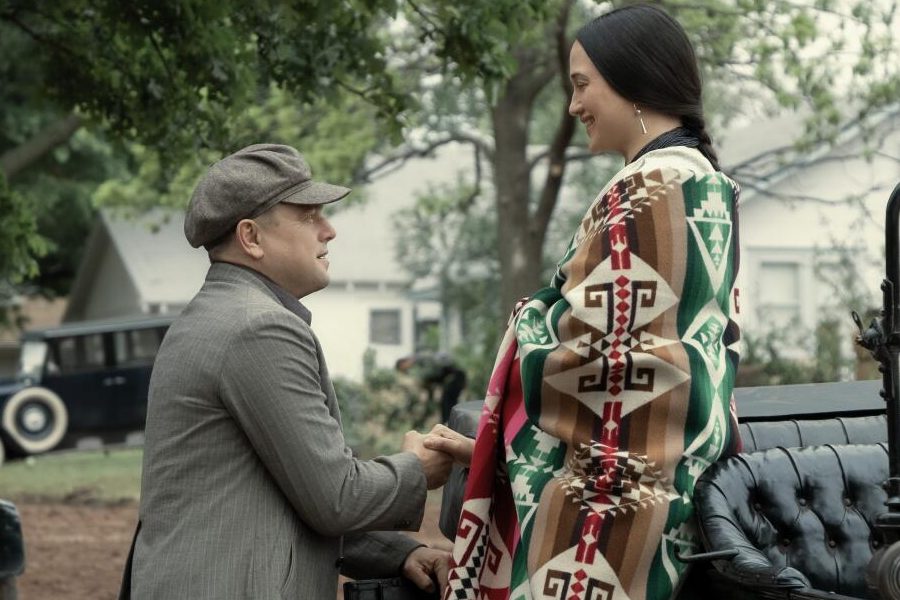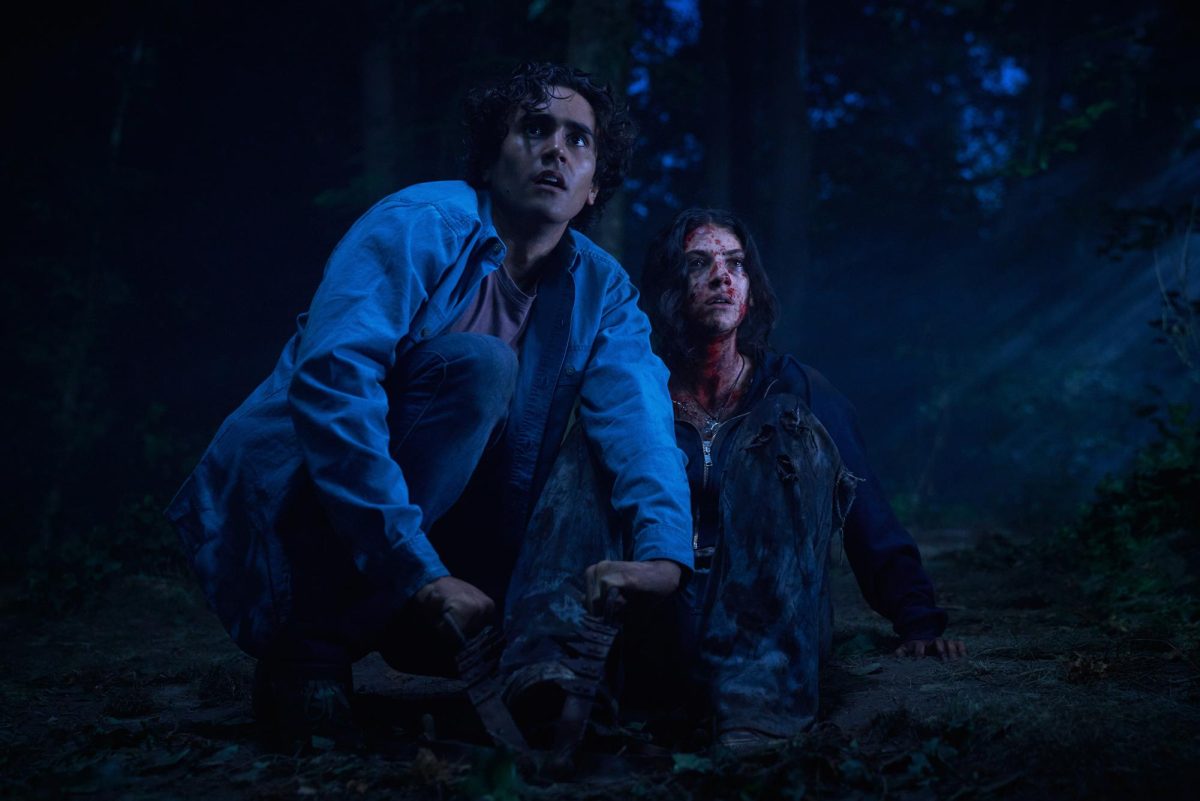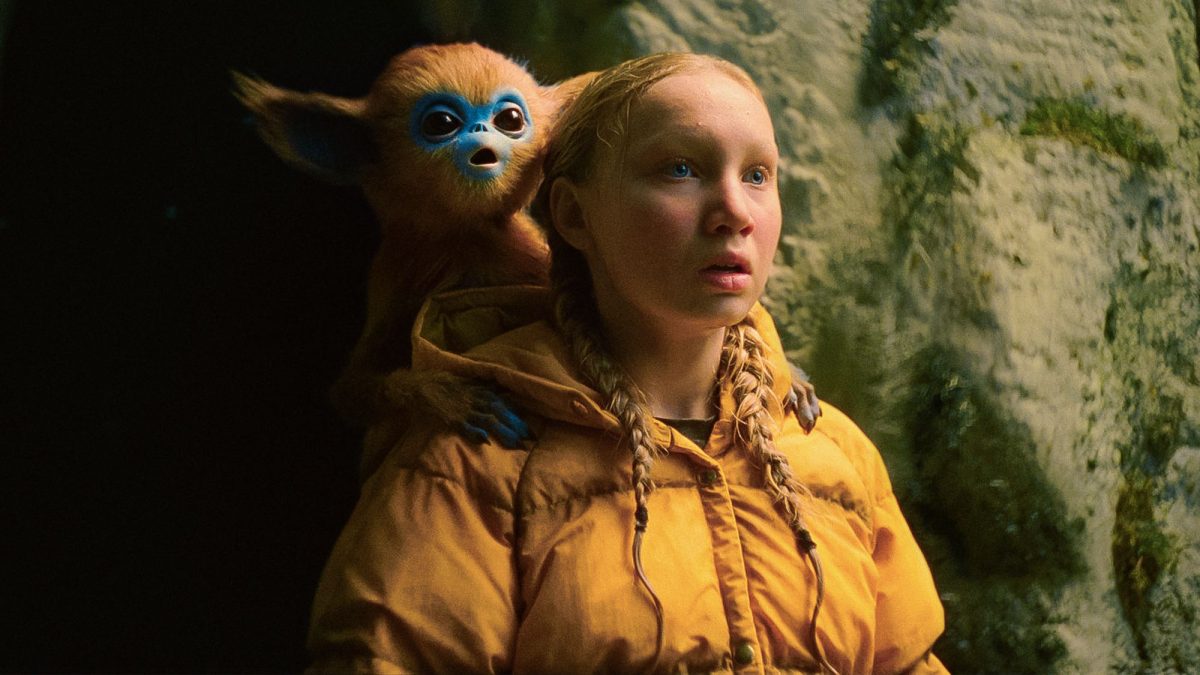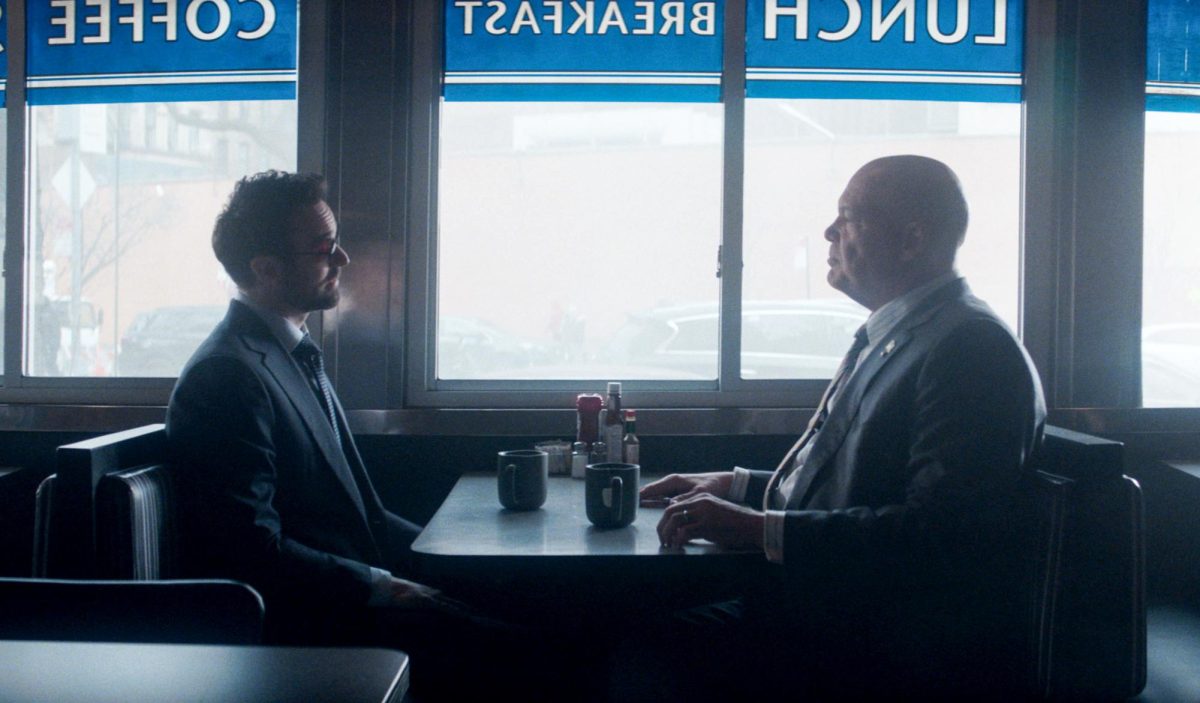In the opening scene of Martin Scorsese’s powerful new film, the Osage people stand underneath the oil they have just discovered in Oklahoma as it coats their entire bodies, the promise of new opportunities ahead. They quickly became the wealthiest people per capita in the world. However, as is often the case throughout U.S. history with indigenous groups, they soon find themselves the target of greedy, white men who have no interest beyond their material items and land.
In “Killers of the Flower Moon,” Scorsese tells the decades-long untold true story of a pattern of murders within the Osage community in the 1920s that uprooted their lives forever. Based on the 2017 non-fiction book by David Grann, the film follows Ernest Burkhart (Leonardo DiCaprio), who has recently moved to Oklahoma in order to work with his uncle, William Hale (Robert De Niro). Ernest marries Mollie Burkhart (Lily Gladstone) as the plan is set in motion to murder all of her family members and eventually take her money. Soon enough, FBI investigator Tom White (Jesse Plemons) rolls into town to try to get to the bottom of the murders.
Oscillating between a historical drama, sweeping romantic epic and investigative thriller, “Killers of the Flower Moon” functions as a painful but necessary retelling of one of the most horrific chapters in American history. Co-writers Scorsese and Eric Roth originally wrote the script to have the film start during the FBI investigation — as the source material did — but they thankfully changed the focus to be more on the Osage people themselves.
Framing the story through the doomed, tragic romance between Ernest and Mollie is the perfect choice to illustrate how people who are complicit in evil — in this case the systematic, racially motivated erasure of the Osage people from their land — try to justify their own actions to themselves. It’s a romance with a betrayal that feels ripped right out of a Greek tragedy, a slow, creeping dread washing over nearly every minute of the film’s 206-minute runtime.
Typical Scorsese returners like DiCaprio and De Niro do excellent work here. DiCaprio plays Ernest with a wicked sense of pathetic rage, a man with so little purpose in life beyond bending his will to his uncle that it’s just deplorable. Ernest’s character is our initial way into this story, which makes witnessing his actions all the more unrelenting. Even as Ernest tries to tell himself that he’s conflicted between two sides, if he truly loved Mollie unconditionally, he wouldn’t have made the choices he did. His decisions were always going to be inevitable.
But it’s Gladstone’s heart-wrenching turn as Mollie that makes the entire movie click into place. The audience doesn’t just hear Mollie scream upon finding her family members dead. We feel her stomach turn. We feel her anguish that can’t fully be put into words. We feel every organ in her body shift and turn. While it’s unfortunate that her character goes largely missing for about 45 minutes of the film when she’s sick and laying in bed, even when she’s not on screen, her presence is always felt.
The manner in which Scorsese depicts the murders is cold, often happening at unexpected moments that completely take the audience by surprise before quickly cutting away. This is all very much intentional to show the horror of violence that rips communities apart forever, leaving every single person a shell of who they were before, stricken by the grief of unstoppable killings that nobody else wants to acknowledge as truth.
Unlike the more stylized violence common in Scorsese’s older films like “Goodfellas” (1990), “Killers of the Flower Moon” is instead straightforward and all the more brutal for it. The often quick, unceremonious editing choices from longtime Scorsese collaborator Thelma Schoonmaker further exemplify this uncompromising tone. In this manner, Scorsese uses the crime epic drama that he’s mastered throughout his esteemed filmography to reduce these murders to what they were: pure, banal evil.
While there was clearly a great deal of care put into consulting with the Osage people from Scorsese’s team, the film still does leave a bit to be desired with getting to know the Osage community outside of the horrible things happening to their community. The family dynamics with Mollie’s family in particular could have been more clearly established, along with their respective traditions.
The inevitable flaws that come with this retelling, of putting such horrific events on screen, is something Scorsese seems to wrestle with in an ending that will catch any audience member off guard. It’s a self-reflexive moment that almost feels like a different film entirely, but it hauntingly recontextualizes everything that came before it with a commentary on exploitation and the way stories about underrepresented groups are told.
Like many terror-stricken periods in American history, stories of genocide and racial injustice are often re-written into different narratives, the pain inflicted on groups of people forgotten and cast side. In this last-stage Scorsese work, he reminds audiences of the power of who is telling what story at any given point in history. As the ending draws to a close, we can’t help but reflect on the story of the Osage people, as well as all of the stories of marginalized groups that we may never hear of in our lifetimes.




















